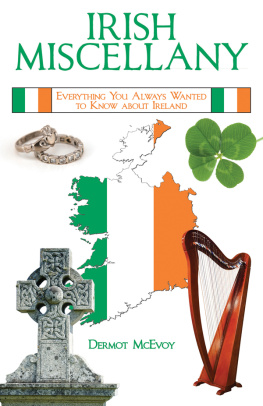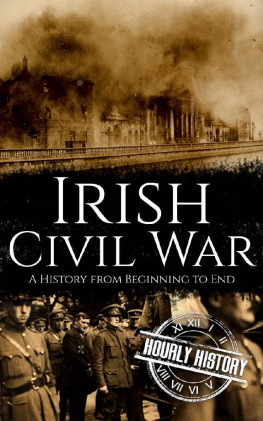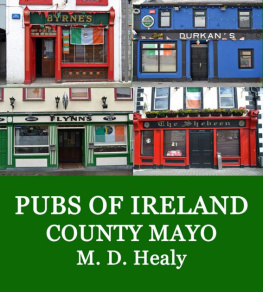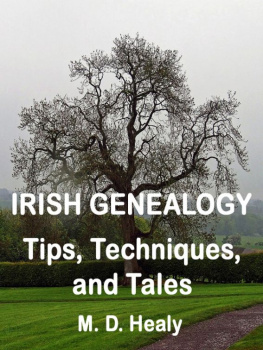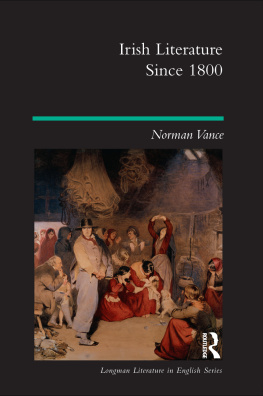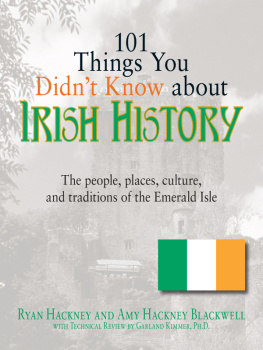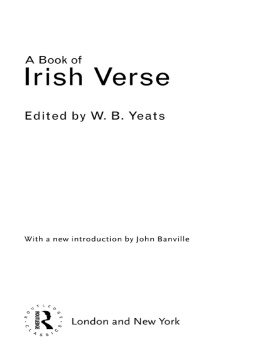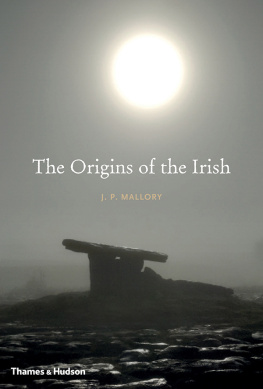Copyright 2015 by Dermot McEvoy
All rights reserved. No part of this book may be reproduced in any manner without the express written consent of the publisher, except in the case of brief excerpts in critical reviews or articles. All inquiries should be addressed to Skyhorse Publishing, 307 West 36th Street, 11th Floor, New York, NY 10018.
Skyhorse Publishing books may be purchased in bulk at special discounts for sales promotion, corporate gifts, fund-raising, or educational purposes. Special editions can also be created to specifications. For details, contact the Special Sales Department, Skyhorse Publishing, 307 West 36th Street, 11th Floor, New York, NY 10018 or .
Skyhorse and Skyhorse Publishing are registered trademarks of Skyhorse Publishing, Inc., a Delaware corporation.
Visit our website at www.skyhorsepublishing.com.
10 9 8 7 6 5 4 3 2 1
Library of Congress Cataloging-in-Publication Data is available on file.
Cover design by Adam Bozarth
Cover photo credit Thinkstock
Print ISBN: 978-1-62914-516-7
Ebook ISBN: 978-1-63220-009-9
Printed in China

This book is dedicated to
Marianne Fagancritic, fan, friend.
Thank you.
TABLE OF CONTENTS
INTRODUCTION
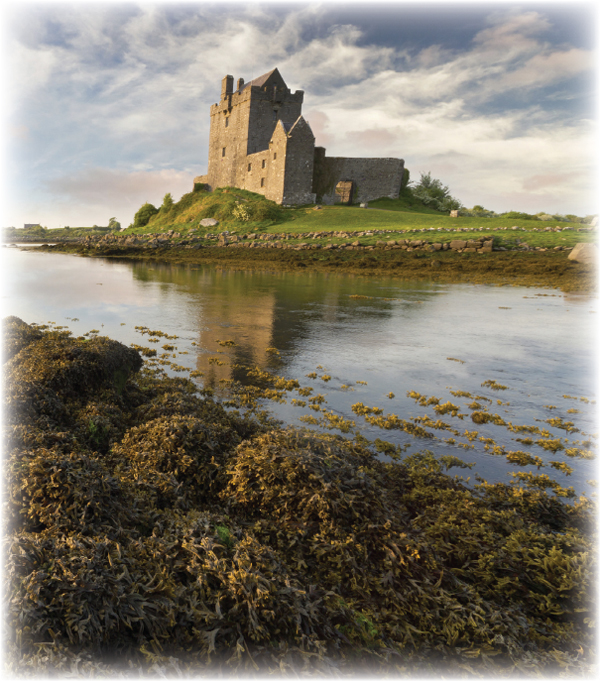
W hat makes the Irish, well, Irish? It is the billion dollar question, and it has no simple answer.
There are hundreds of thingssome prominent, most mundane, some cloaked in secrecy, most deservedly obscurethat coalesce to make a race: language, climate, religion, the land, song, food, laughter, poverty, diaspora, famine, revolution.
To the outside worldand that would include the American Irishthere are several stereotypes attached to the Irish. These stereotypes can be swiftly called to mind: Catholic, drinkers, fighters, revolutionaries, terrorists, writers, superstitious, Gaelic, pious, extravagantjust to name a few. Youll see caricatures around the time of St. Patricks Day with green hats and green beer, like its a joke. But famine and diaspora and revolution are no joke. A toughness was burned into this race that is impossible to shake.
Like many stereotypes, there is a grain of truth in all of them. But stereotypes can be tricky, especially Irish ones. Yes, Ireland is a Catholic country, but the Irish also have a rich cultural and political tradition bestowed on them by their fellow Protestant and Jewish brothers. They are drinkers, but they also have a disproportionate amount of Pioneers, severe teetotalers. They will fight for their own freedom and rights but are also an important part of United Nation peacekeeping missions in far-off corners of the globe. To knowto understandthe Irish, one must look through their history and their culture to understand how this sturdy, implausible race survived, not only in Ireland, but around the world.
So look inside and find some of the miscellany that makes the Irish, well, Irish. Its not all pretty, and sometimes its downright ugly, but through and through its impossibly colorful and edifying and, of course, very Irish.
HOWS YOUR ERSE? ADVENTURES IN THE IRISH LANGUAGE

I f someone in Ireland asks you Hows your Erse? they are not inquiring about the health of your buttocks. (Note: the preferred Irish designation for the derrire is arse.)
Erse is what they call Irish Gaelic.
There are two official languages in the Republic of IrelandEnglish and Irisha language also known as Gaelic, especially by Americans. (There are three Gaelic languages: Irish, Scotch, and Manx; Irish is the most prominent.) Irish is spoken mostly in the west of the country and in the Gaeltacht , or Irish-speaking enclaves.
Although English is the majority language, Irish is used frequently, with an estimated 5 to 10 percent of the population using it as their primary language. There are Irish-speaking channels on television and radio and such things as street and road signs are bilingual. The Irish national anthem, Amhrn na bhFiann (The Soldiers Song), is always sung in Irish. So Irish words are used fluently and effectively. While visiting Ireland you may come in contact with some of these frequently used Irish words:
| Pleasantries |
| Dia Duit | hello |
| Filte | welcome |
| Cead mile filte | one hundred thousand welcomes (a typical Irish greeting) |
| Go raibh maith agat | thank you |
| Slinte | health (a common Irish toast) |
| Sln | goodbye |
| Places/Travel |
| ire | Ireland; the official name of Ireland |
| Poblacht na hireann | the Republic of Ireland |
| Oifig an Phoist | post office |
| An Lar | The Centre, as in City Centre, often seen in bus destination boxes |
| Baile tha Cliath | Dublin, or the town of the hurdled ford, often seen on buses |
| Aer Lingus | air boats or air fleet, Irelands national airline |
| Bthar | road |
| Food |
| Bia | food |
| Bricfeasta | breakfast |
| Tae | tea |
| Caif | coffee |
| Bainne | milk |
| Sicra | sugar |
| Uisce | water |
| Uisce beatha | the water of life, corrupted by the English into whiskey |
| Government |
| Taoiseach | Irish word for leader or chief, i.e., the Irish prime minister |
| Tnaiste | deputy prime minister |
| An Uachtarin | Irish president |
| ras an Uachtarin | The Presidents House, the official residence of the President of Ireland in Dublins Phoenix Park |
| Dil ireann | Irish parliament |
| Garda Sochna | Civic Guards, Irish national police force, referred to as the Guards |
| Gaeilge | Irish |
| Barla | English |
| Raidi Teilifs ireann | RTE, Irelands national radio and television network |

| Common Words |
| Leithreas | toilet; know your fir (men) from your mna (women) |
| Tacsa | taxi |
| Stad | stop |
| Ceol | music |
| Leabhar | book |
| Madra | dog |
| Capall | horse |
| Ssta | happy or satisfied |
| Brn | sad |
| Fliuch | wet, as in the weather |
| Nuacht | news |
| Go maith | good |
| Craic | fun, often used as in that was great craic last night |
| Gr | love |
| Cailn | girl |
| Buachaill | boy |
| Garsn | young boy |
| Scoil | school, as in school bus |
And the final transition from Erse to Arse: Pg mo thin Kiss my arse!

